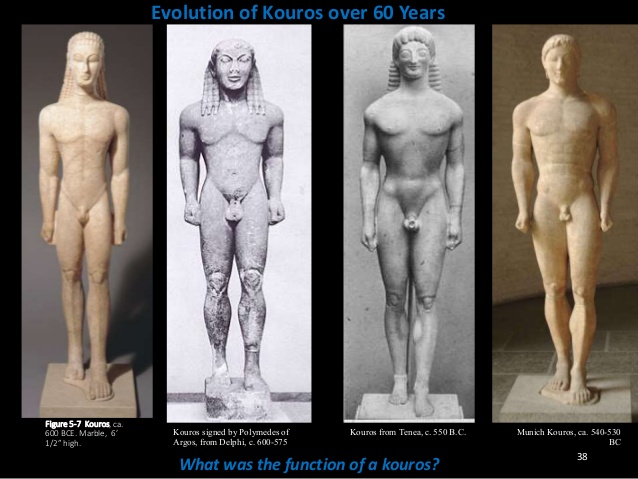Week 4
The earliest manifestation of the new Bronze Age invader culture is visible in the art of Mycenae (Agamemnon), Pylos (Nestor) and Troy (The treasure of Priam). All three of these ancient Greek city-states were established and rich by 1500 BC and all three are connected in the stories of the Trojan War which is often dated to something like 1200-1100 BC (same time as the Exodus). The art and culture of this world gives us a window into Ancient Greek culture before the Trojan War and before the Bronze Age Collapse. Eric Kline's date for the Bronze Age Collapse is in the 1100's and his book about it is entitled 1177, The Year Civilization Collapsed.

Eric H. Cline,
1177 B.C.: The Year Civilization Collapsed,
Princeton University Press; Revised edition (September 22, 2015),
ISBN 0691168385
A NOTE ON THE FALL OF TROY
In 2008, scientists Marcelo O. Magnasco and Constantino Baikouzis at Rockefeller University used clues in the text and astronomical data to attempt to pinpoint the time of Odysseus’s return from his journey after the Trojan War. The first clue is Odysseus’ sighting of Venus just before dawn as he arrives on Ithaca. The second is a new moon on the night before the massacre of the Suitors. The final clue is a total eclipse, falling over Ithaca around noon, when Penelope’s Suitors sit down for their noon meal. The seer Theoclymenus approaches the Suitors and foretells their death, saying, “The Sun has been obliterated from the sky, and an unlucky darkness invades the world.” The problem with this is that the ‘eclipse’ is only seen by Theoclymenus, and the Suitors toss him out, calling him mad. No one else sees the sky darken, and it is therefore not actually described as an eclipse within the story, merely a vision by Theoclymenus. Doctors Baikouzis and Magnasco state that “the odds that purely fictional references to these phenomena (so hard to satisfy simultaneously) would coincide by accident with the only eclipse of the century are minute.” They conclude that these three astronomical references “‘cohere’, in the sense that the astronomical phenomena pinpoint the date of 16 April 1178 BC” as the most likely date of Odysseus’ return. This dating places the destruction of Troy, ten years before, to 1188 BC, which is close to the archaeologically dated destruction of Troy VIIa circa 1190 BC.
The most illustrative of all the artistic creations of this very early Greek culture is the evolution over several hundred years of the standing nude figure of both men and women. But the male figure was more important and more widely created.
 The story of this evolution reveals the unique contribution to art and to western art of its concentration on the human form, No other ancient artistic tradition in any other ancient culture was so devoted to the human form as was the Greek culture. Here in this one artistic choice is a major clue as to the enormous influence of Ancient Greek art on the whole 3000 years of Western art that begins here in Greece.
The story of this evolution reveals the unique contribution to art and to western art of its concentration on the human form, No other ancient artistic tradition in any other ancient culture was so devoted to the human form as was the Greek culture. Here in this one artistic choice is a major clue as to the enormous influence of Ancient Greek art on the whole 3000 years of Western art that begins here in Greece.
SUGGESTED READING IN HONOUR
If you are following our lectures with reading in Honour, chapter 4 on the Greeks will be the appropriate reading for the next 3 weeks of lectures. You can skip chapter 3, or enjoy it for your own benefit.
The best general introduction to Greek culture is this wonderful book from Edith Hall.

Edith Hall,
Introducing the Ancient Greeks: From Bronze Age Seafarers to Navigators of the Western Mind,
W. W. Norton & Company; 1 edition (June 16, 2014),
ISBN 0393239985
